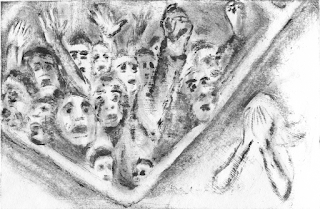It was an award-winning evening as the Queens World Film Festival staged its closing ceremonies at the Museum of the Moving Image in Astoria Saturday night.
“We are so thrilled by the films shown and the overwhelming response from our audience and the media,” festival directors Don and Katha Cato said in a statement. “This was our largest festival ever with a number of standing-room-only screenings, we thank all of our filmmakers, sponsors, venues and staff.”
Earlier in the week, director Melvin Van Peebles received the festival’s Spirit of Queens Award in recognition of his work, which helped create a new era in African-American cinema.
His ground-breaking 1971 movie “Sweet Sweetback’s Baadasssss Song” was shown as part of the tribute.
The closing evening program began with a screening of the “Smithereens,” the 1982 film directed by Susan Seidelman.
A Q&A session with Seidelman and the museum’s curator David Schwartz followed the film.
Then it was off to the Paper Factory Hotel and the presentation of the awards.
Katha Cato added that the films selected “were inclusive and diverse, truly representative of the world and the world of film.”
Winners were determined by a group of judges, audience members and the Catos.
Below is a list of the winning films:
• Best Animation — “Lima,” by Afshin Roshanbakht and Vahid Jafari
• Best Family Friendly — “Mr. Ready,” by John Galvin
• Best LGBTQ — “Life’s a Drag,” by Robin Royce Queree
• Best Actress in a Short — Marisa Vitali, “Grace”
• Best Actress in a Feature — Sareh Bayat, “Oblivion Season”
• Best Actor in a Short — Calvin Smith, “Better Man”
• Best Actor in a Feature — Timothy Neil Williams, “Read Me”
• Best Ensemble — “Ride or Die”
• Best Comedy Short — “RSVP,” Nicholas Billon
• Best Comedy Feature — “Dirty Beautiful,” Tim Bartell
• Best Cinematography Short — “City of Dreams,” Yana Karin
• Best Cinematography Feature — “Dying Candle,” Rabin Acharya
• Best Cinematography Documentary — “God Knows Where I Am,” Gerardo Puglia
• Best Director Documentary Short — “With Love,” Christopher Ludgate
• Best Director Documentary Feature — “God Knows Where I Am,” Todd and Jedd Wider
• Best Documentary Short — “In the Hollow,” Austin Bunn
• Best Documentary Feature — “Marzia, My Friend,” Kirsi Mattila
• Best Director Short — “Queen Kong,” Monica Lisa Stambrini
• Best Director Feature — “She Sings to the Stars,” Jennifer Corcoran
• Best Short — “A Warm Spell,” Toshimichi Saito
• Best Feature — “H.O.M.E.” Daniel Maldonado
• Special Prize for Motion Graphics — “Hoppla!”
• Special Prize of First Feature — “Nothing Serious”
• Special Prize for Social Impact in a Documentary — “Julio of Jackson Heights”
• Special Jury Prize — “Oblivion Season”
• Audience Award Documentary — “Saving Jamaica Bay”
• Audience Award Feature — “Pop Meets the Void”
• Founders Choice for Short — “Alles Wird Gut, (Everything Will Be Okay)”
• Founders Choice Feature — “She Sings to the Stars”
• Best of the Fest — “Pop Meets the Void”
On Friday, April 22, the Queens World Film Festival will present a free screening of this year’s shorts at Resorts World Casino.























